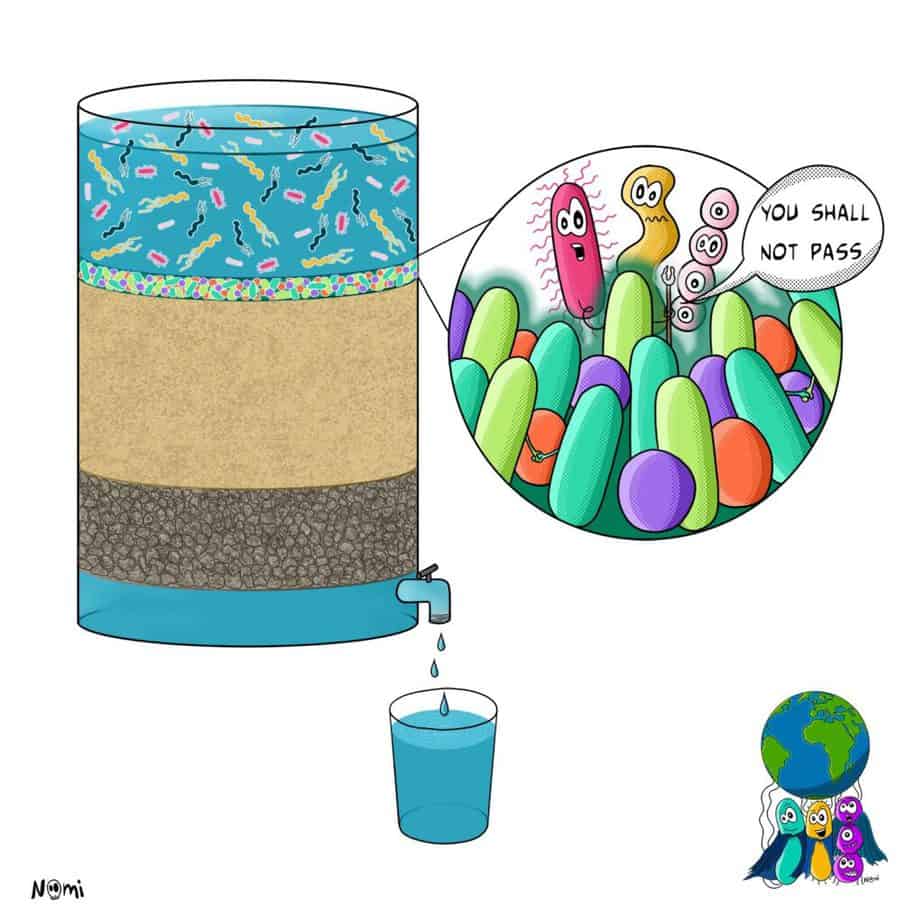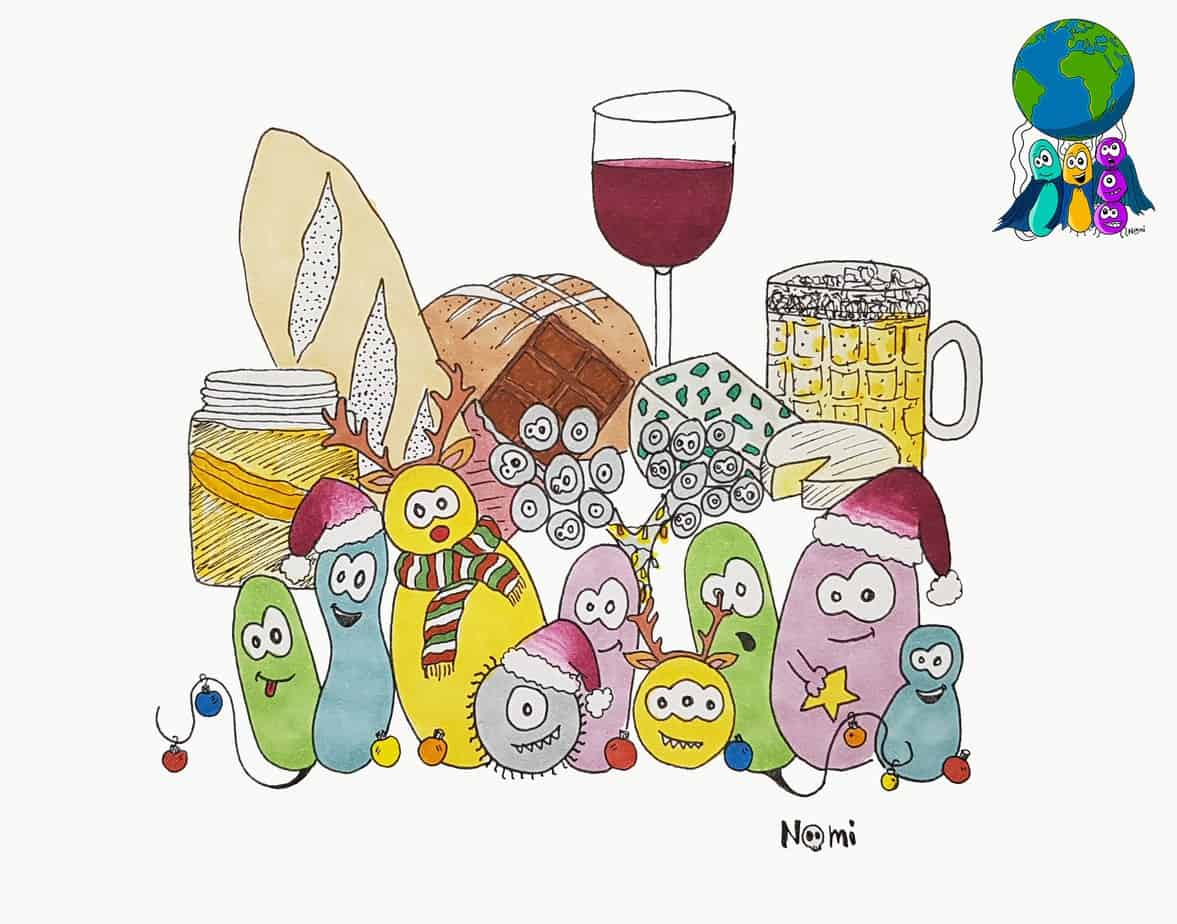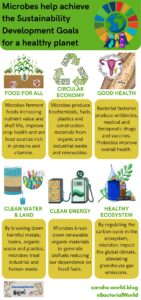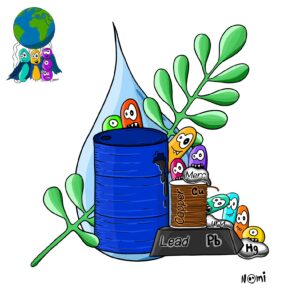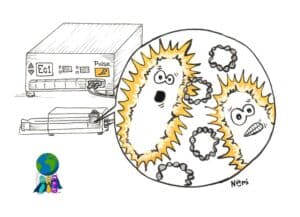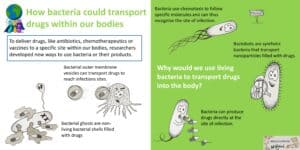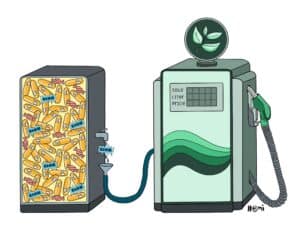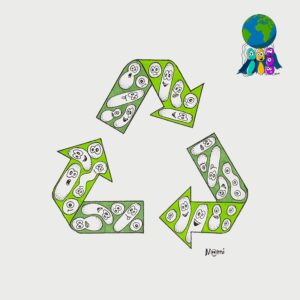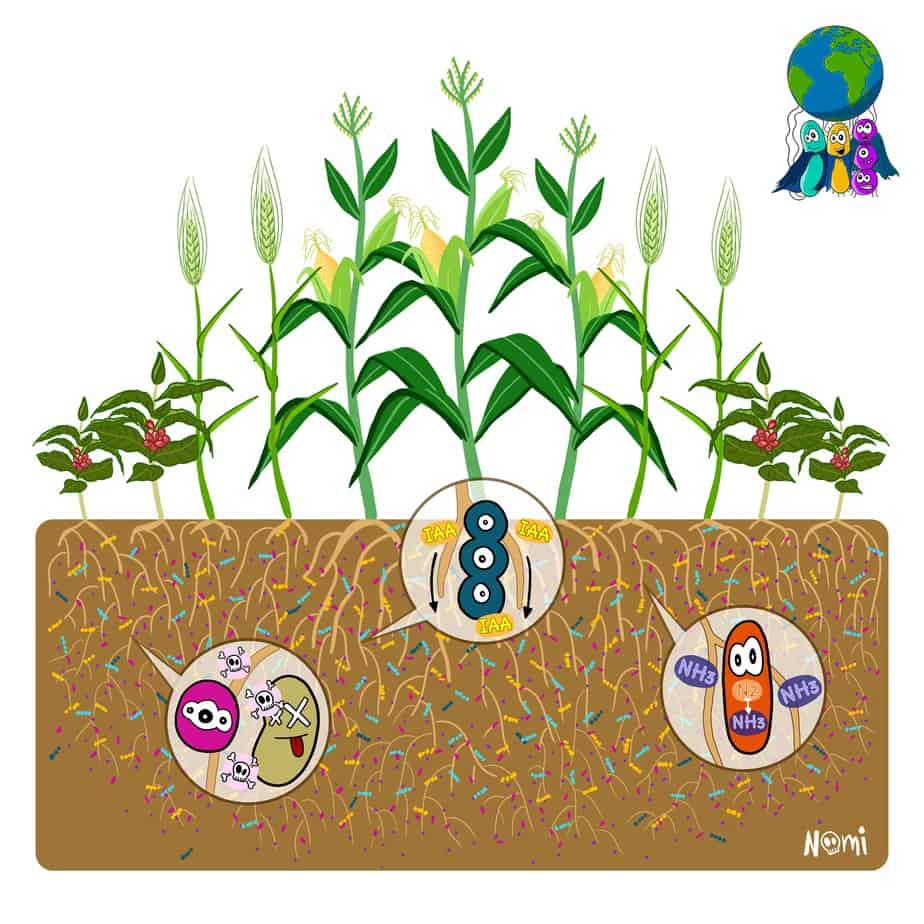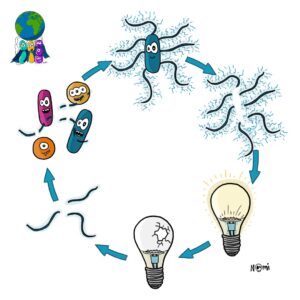Water, water everywhere, but not many drops to drink.
Even though about 70% of the Earth’s surface is covered by water, a majority of that water we cannot drink.
The water that is available to drink can also be contaminated with toxic chemicals or certain microorganisms that would sicken us.
But not all microbes are bad. In fact, many microbes are helping us save our planet. One way of doing this is by cleaning up our drinking water.
We don’t have enough clean freshwater
Everyone needs water to drink.
Humans can only drink freshwater, which makes up less than 3% of the world’s water supply. Freshwater is found in lakes, rivers, and streams. It is also locked away in the icecaps as glaciers, up in the atmosphere as water vapor, and deep in the soil as groundwater.
Of the small amount of freshwater easily accessible to us, we have used or contaminated much of that freshwater. Agricultural practices have diverted many sources of freshwater for animals and crops. Climate change and warmer temperatures cause farmers to use more freshwater resources as well. And global industrial practices can lead to toxic chemicals entering the environment and water.
This means that now we have less freshwater available to drink than ever.
We have learned ways to clean our drinking water, but this requires a lot of chemicals, energy, and money. Good thing microbes can help us decontaminate our drinking water in faster, easier, and cheaper ways.
Microbes clean water by filtering out bad bacteria
Drinking certain types of bacteria can make us sick. You have probably heard of outbreaks of E. coli or Salmonella leading to people being ill.
These microbes normally live in animals’ digestive tracks and are excreted in their wastes. They can enter the water system from runoff from farms, and ingesting them can make us really unwell. Luckily, microbes can help remove pathogenic bacteria from our water.
A simple method of water filtration includes having water flow over a bed of microbes and sand to remove any contaminates, called ‘slow sand filtration.’ At the top of the sand is a gelatinous layer of microbes, known as a biofilm. In such a biofilm live various bacteria, fungi, protozoa, archaea, and other aquatic microorganisms.
This layer is the so-called Schmutzdecke, which is German for “dirty layer.” As water flows over this biofilm, microbes in the Schmutzdecke trap and consume particles and pathogenic microbes. Every Schmutzdecke layer has a unique community of microbes based on the contaminants in the water. In this way, beneficial microbes remove harmful ones and decontaminate our drinking water.
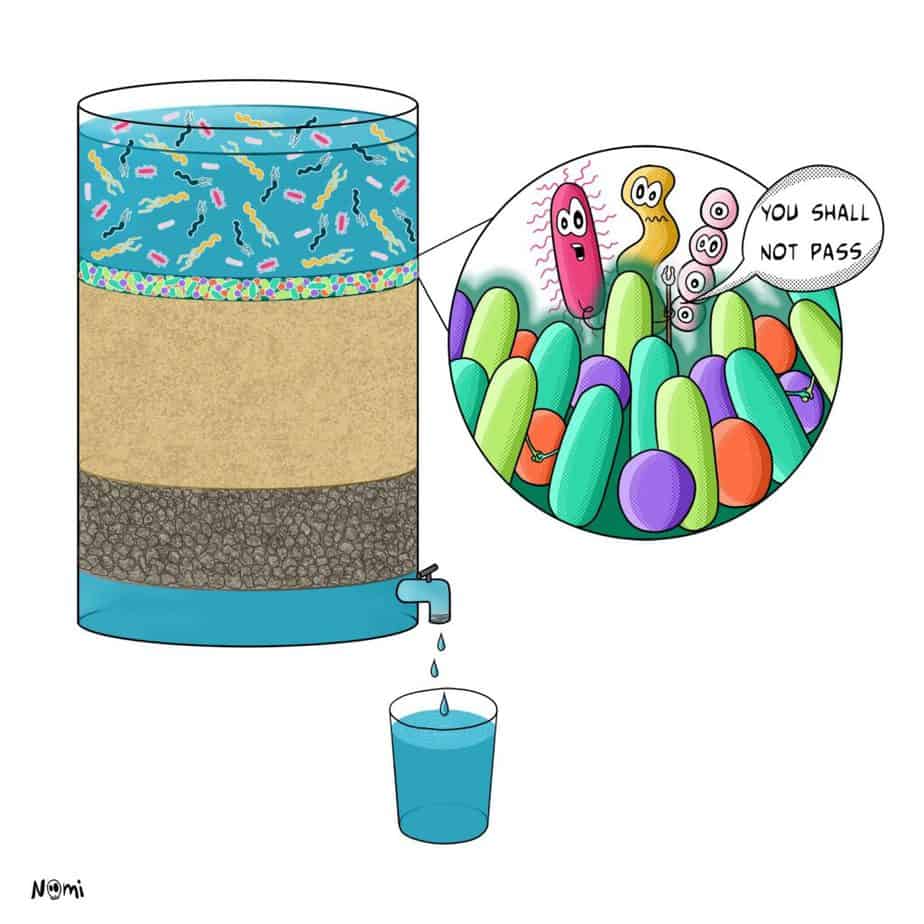
Slow sand filters can purify away 90-99% of contaminating bacteria! The Schmutzdecke removes most of the fecal contaminating bacteria like E. coli. This system does not involve the use of chemical disinfectants, which can select possibly pathogenic bacteria that become resistant to decontamination efforts.
Also, the Schmutzdecke feeds on the microbes and organic matter found in the contaminated water. Hence, slow sand filters are a cheap and low-maintenance way to filter water in resource-limited areas throughout the world.
Microbes clean our drinking water by preventing bacterial build-up
The Schmutzdecke is an example of a community of microbes filtering water to remove pathogenic microbes and make the water safe to drink. But decontaminating water does not always need a whole community of microbes. Sometimes just one part of a microbe is enough to clean the water. In fact, researchers have found a protein from bacteria that can help stop bacterial contamination.
Pathogenic bacteria like Pseudomonas aeruginosa can contaminate water lines that carry water to homes and businesses. To let other P. aeruginosa know they have found a place to stay, bacterial cells send messages to each other in the form of chemical molecules. This communication system, called quorum sensing, allows bacteria to ‘sense’ the number of other bacteria, (a ‘quorum’) around them.
If enough P. aeruginosa cells grow in the same area and send the same message, they will start to form a biofilm. Just like the Schmutzdecke, biofilms act as a gelatinous layer and are difficult to break up. That’s where that special bacterial protein comes in to help stop biofilm formation.
This protein is called AiiADH82 and comes from the deep-sea bacterium Bacillus velezensis (DH82 strain). AiiADH82 binds and degrades the chemical messages that bacteria use to communicate with each other.
Without those chemical signals, bacteria do not know they should start forming a biofilm. Adding AiiADH82 to P. aeruginosa cultures decreased bacterial growth and significantly inhibited biofilm formation in P. aeruginosa-contaminated water. Scientists hope one day to apply the AiiADH82 protein to water lines and drinking fountains. In these, bacteria could group to reduce bacterial contamination and keep our drinking water safe.
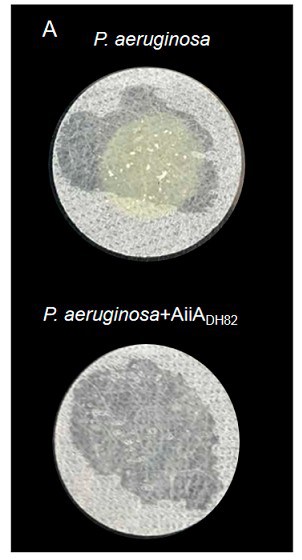
Microbes clean our drinking water
People everywhere need clean water for cooking, cleaning, and drinking. However, clean drinking water is a limited resource. Toxic chemicals or pathogenic microbes can pollute our water. Current methods to purify water cost a lot of energy and money.
We are fortunate that microbes are here to help us clean up our water and our environment. As the global population increases, using microbes to clean drinking water is a cheaper, sustainable and more environmentally friendly way to produce the needed levels of clean water. A great example of how microbes are making our world better.
Along with microbes, we can save the planet!
Take away messages from this week’s article:
- Clean drinking water is a limited and necessary resource for everyone on the planet
- Microbes can clean polluted drinking water by reducing the growth of pathogenic bacteria
- Microbial decontamination of drinking water is a sustainable and inexpensive way to provide clean drinking water to our increasing global population

